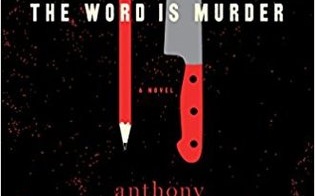{shortcode-b9f9e1f3fa3e3df3e294e7d29cb3e9d468d8e017}
Anthony Horowitz is no stranger to the mystery novel, but “The Sentence is Death” is unfortunately his least exciting foray into the genre. A sequel to “The Word is Murder,” the first in the Hawthorne series, Horowitz fails to keep this second novel innovative. Although the mystery is itself entertaining, the general unlikeability of the detective Hawthorne as well as some borderline inappropriate comments make this book more difficult to read than it should be.
Although this series employs the age-old structure of the brilliant detective with a clueless sidekick, the author does add one twist: Horowitz himself is the helpless assistant to Hawthorne, as well as the novel’s narrator, and he often discusses his struggles with deciding how to write the story. While this blurring of reality and fiction — the cases are clearly fake, but Horowitz includes many real facts about his life — was convincing in the first installment, it grows tiring in the second. Now, the countless facts about his life or his worries about how to portray the off-putting Hawthorne cloud the more interesting mystery, rather than spice up the classic formula.
Horowitz bungled the discussion about homophobia in “The Word is Murder” — he frets about giving a platform for Hawthorne’s very apparent homophobia, but ultimately does so anyway — and “The Sentence is Death” is no better. Although Horowitz mentions countless times that Hawthorne acts oddly or rudely to queer characters, he doesn’t make a particularly strong effort to rebuke Hawthorne or otherwise remedy Hawthorne’s problematic behavior. Furthermore, Horowitz himself makes some tone-deaf comments throughout the novel about various other minorities. For instance, when Horowitz sees Hawthorne talking to a teenager with a form of muscular dystrophy, he asks himself, “What could Hawthorne possibly need a young man in a wheelchair to help him with?” Although this could simply be Horowitz wondering at the fact that Hawthorne has any friends at all and reiterating the facts of the encounter, it unfortunately comes off as disbelief that someone in a wheelchair could be of help to an able-bodied man.
This isn’t the only instance of off putting and even offensive comments. Horowitz’s portrayal of Akira Anno, a high-brow feminist author, leaves much to be desired. He paints her as cold and unlikeable, which is, of course, perfectly fine especially because her ex-husband Adrian Lockwood expresses his dislike of Akira to Horowitz early on. But while Akira’s descriptions always show her to be completely awful and out of hand — even when she has reason to be angry — Adrian is given a much kinder treatment: “Adrian Lockwood was the sort of man who was hard to dislike although he was doing everything he could to help us on our way.” Though both Akira and Adrian seem equally contemptible, Adrian is continuously cast in a decent light while Akira is painted as intolerable, which seems to be motivated by the fact that Adrian is a man and Akira is a woman.
Unfortunately, Horowitz is perhaps all too aware of how his treatment of Akira’s character will be perceived and tries to cover his tracks: “I’ve admired the work of feminist writers from Virginia Woolf to Doris Lessing and Angela Carter, but Akira’s brand of humourless introspection — along with her audience’s appreciation of it — left me cold.” All of this due to a reasonable, if not semi-radical, discussion by Akira. But it usually isn’t a good sign if someone feels the need to prove they aren’t being sexist or anti-feminist.
Horowitz’s unfortunate portrayals do distract from the overall story, which is a shame because in and of itself the core mystery of “The Sentence is Death” is truly entertaining. There are a few holes — for example, why do they bring in Hawthorne immediately when the culprit initially seems obvious? — but overall, the ending is surprising without feeling forced. The biggest letdown is that the mystery of Hawthorne’s past, which Horowitz is constantly fretting about and trying to discover, is no closer to being solved by the end of this second installment.
—Staff writer Caroline E. Tew can be reached at caroline.tew@thecrimson.com. Follow her on Twitter @caroline_tew.














